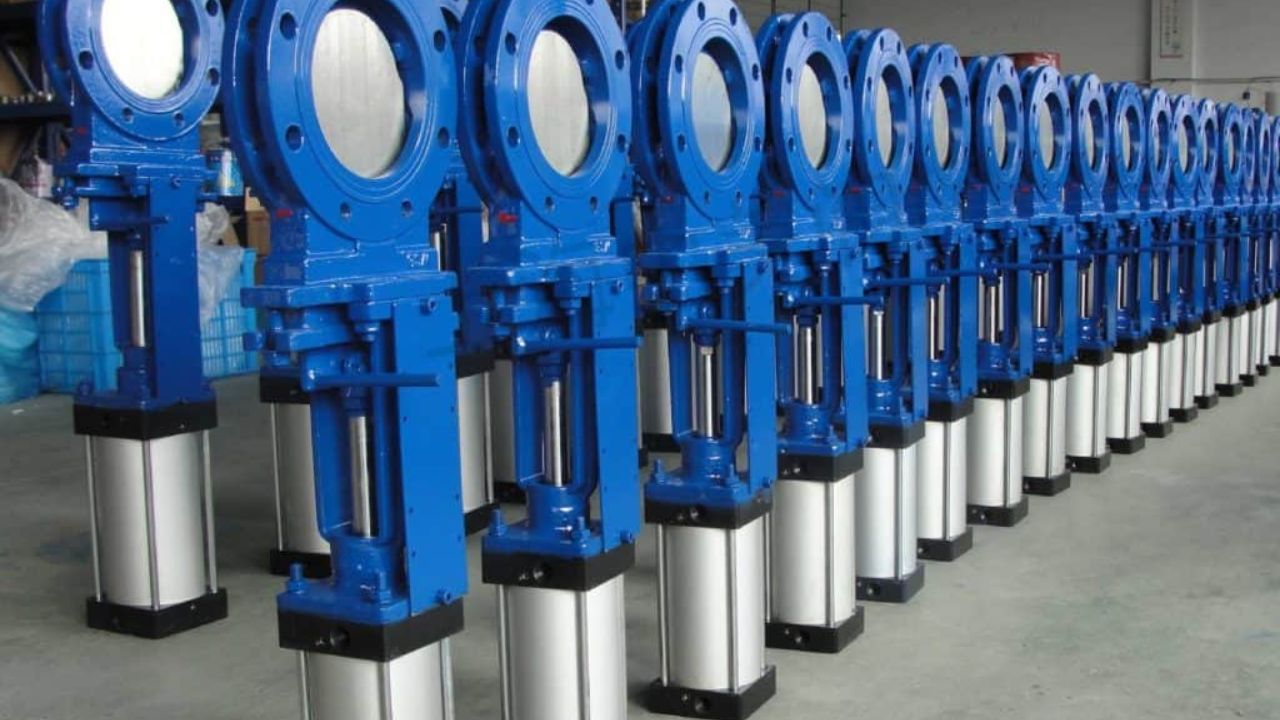Precise flow control is required in industrial applications. From managing fluids to manipulating heavy slurries, the type of valve used significantly impacts efficiency, safety, and overall system performance. Offering the latest flow control solutions for varying needs, Yaxing Valve is a well-known gate valve and knife gate valve manufacturer. To make the best valve selection for your application, be sure to understand the differences between Yaxing knife gate valve and traditional gate valves, from water supply and treatment to oil, gas, and chemical processing.
The Basics of Yaxing Knife Gate Valve and Gate Valve
Particularly for applications involving high solid media, knife gate valves are designed to specifically handle fluid items. They consist of a blade with a sharp edge that is able to cut through thick slurry and viscous fluids. This capability makes knife gate valves especially advantageous in the mining and paper production industries where solids content might be high. They are also known for their ability to minimize clogging and prevent buildup to operate smoothly in dirty environments.
On the contrary, traditional gate valves are well suited for on/off with a wide range of fluids such as water, oil and gas. These valves are designed to provide precise control, especially in pipelines requiring tight sealing. Gate valves often utilize rising or non-rising stems in a controlled flow environment. Being fairly sluggish, they are well suited for consistent and leak-proof service in such industries as water supply and oil pipelines for medium flows that are normally clean and free of heavy particulates.
Design and Structure Differences Between Yaxing Knife Gate Valve and Gate Valve
The major design difference between knife gate valves and gate valves is their usage. Knife gate valves have a sharp-edged blade that can ‘cut’ through dense materials and solid, rich slurries. The design allows for a clean separation in the valve chamber without the risk of clogging. Additionally, knife gate valves have a blade structure that reduces the probability of jamming, which is important when dealing with highly viscous substances.
In contrast, gate valves have a wedge or parallel gate that moves vertically in the valve body to open and close the flow. Depending on how the stem acts when the valve opens or closes, gate valves have non-rising or rising stems. This structure can be employed to control the flow of liquids and gases without much resistance and thus is reliable in pressurized pipelines and standard flow systems.
Comparative Study on Yaxing Knife Gate Valve and Gate Valve
A common use of knife gate valves is in industries where heavy solids are present, particularly pulp and paper, wastewater treatment, and mining. Knife gate valves are used in these fields for optimal flow control and elimination of blockages with abrasive or viscous materials. They are advantageous as they can hold thick substances without frequent maintenance, making them more economical in industries that involve working with high-solid media.
Yet, in water supply systems, oil pipelines, and chemical processing industries, gate valves are commonly used. Gate valves are equipped with a secure sealing mechanism that maintains a leakproof control for fluid transfer under high pressure, such as oil, water, etc. For applications where continuous flow and safety are crucial, gate valves tend to be preferred for their wear and reliable performance.
Performance Characteristics: Gate Valve vs. Yaxing Knife Gate Valve
Yaxing knife gate valves endure wear and clogging better, resisting thick slurries or particulate-laden fluids. This design reduces internal pressure build-up and helps it last longer in harsh industrial settings. Knife gate valves are also suitable in environments where abrasive or corrosive materials are present, as leak tightness and reliable service are guaranteed.
Yaxing gate valves, on the other hand, offer precise flow control and a reliable seal in clean fluid applications. They are less well suited for high solid regions but are highly reliable in maintaining flow and pressure consistency for liquids and gases. In controlled flow systems, these valves show high resistance to wear and can withstand high pressure, making them indispensable in energy generation and chemical processing.
Yaxing knife gate valve and gate valve Cost-Effectiveness and Maintenance
In high solids applications, knife gate valves are the cost-efficient choice, providing a robust design with little to no need for replacement or seamless maintenance. But for knife gate valves handling abrasive substances, routine inspection is a useful means to continue to achieve optimal performance.
Gate valves tend to carry lower maintenance costs when dealing with fluids low in particulate content. Their simple design and straightforward way of operation minimize long-term expenses. The service life of these gate valves and performance reliability can be extended through regular inspection in high pressure applications—particularly in corrosive environments.
Conclusion
When selecting the right valve for an industrial setup, it is important to understand the unique abilities of Yaxing's Knife gate and gate valves. Knife gate valves possess excellent service with high solid and slurry environments, running smoothly without clogs. Because of its precise sealing and durability, gate valves are a good choice for clean fluid flow applications needing to control the flow reliably. From valve design and development to efficient manufacturing and flexible system solutions, Yaxing’s assurances of durability and high-quality value across both valve types stand as a strong testament to their reliability as a flow control partner for the harsh demands of diverse industries.


